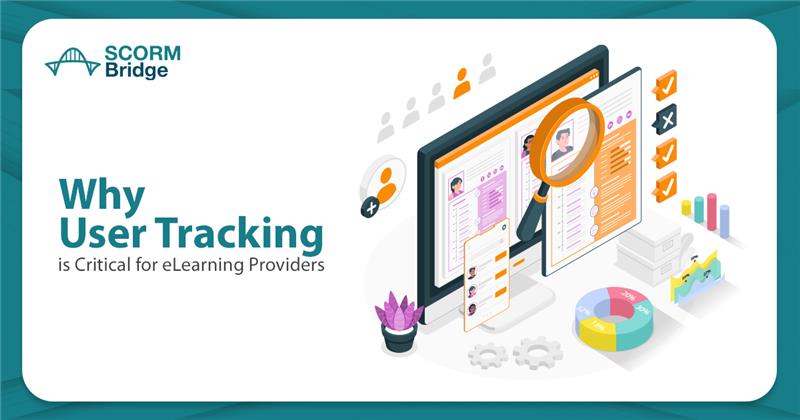
Introduction
In the eLearning industry, content creation is only part of the process. Knowing how learners engage with your courses is equally crucial to providing value and improving your offerings. User tracking provides insights that help you understand how content is being used, where learners are struggling, and how to optimize the learning experience. For eLearning providers, especially those delivering SCORM content, tracking user activity is a critical component of effective content management and business strategy.
1. Monitor Learner Engagement and Progress
Tracking user activity allows providers to monitor how learners engage with the content. Metrics like time spent on modules, quiz results, and completion rates provide insight into which parts of the course are effective and which areas may need improvement. This data-driven approach helps you fine-tune your content, ensuring that learners get the most out of your courses.
2. Improve Course Design Based on Data
When you track user activity, you gain valuable data on learner behavior. For example, if you notice that learners are consistently abandoning a module at a certain point, it could indicate that the content is too difficult or unclear. By using tracking data, you can improve course design to better meet the needs of learners, increasing engagement and retention.
3. Support Adaptive Learning
User tracking enables personalized learning experiences. By monitoring how each learner interacts with the content, you can adjust the course to provide individualized feedback, additional resources, or alternative learning paths. This type of adaptive learning is highly effective in improving learner outcomes and engagement.
4. Simplify Billing and Licensing
For eLearning providers, billing clients based on actual usage is a more accurate and fair pricing model than offering flat-rate packages. With SCORMBridge’s user tracking capabilities, you can see how many users accessed the content, how often, and for how long. This allows you to bill clients based on the real value they receive, creating a win-win for both parties.
5. Ensure Compliance with Training Requirements
In industries where training compliance is critical, such as healthcare, finance, and safety, user tracking helps ensure that learners have completed required courses and assessments. SCORMBridge allows providers to track whether learners have completed mandatory training, making it easy to generate reports for audits or certifications.
6. Identify Learning Gaps
Tracking data helps you identify where learners are struggling. Whether it’s a difficult quiz or an unclear module, user tracking can reveal learning gaps that need to be addressed. By providing additional support or revising content, you can help learners overcome these challenges and improve overall course performance.
7. Optimize Content Delivery for Different Devices
With the rise of mobile learning, it’s important to know how your content performs across different devices. User tracking allows you to see whether learners are accessing courses on desktops, tablets, or smartphones, and adjust content delivery accordingly. This ensures a smooth and consistent learning experience across all platforms.
Conclusion
User tracking is no longer optional for eLearning providers—it’s essential. By leveraging user data, you can improve your content, create personalized learning experiences, simplify billing, and ensure compliance with training requirements. SCORMBridge’s built-in tracking tools make it easy to monitor user activity, providing you with the insights needed to continuously optimize your eLearning offerings.
Have questions or need assistance? Visit our Contact Us page and connect with our team at sales@succeedtech.com
Follow our official LinkedIn page for the latest insights and updates on effortless SCORM content delivery.
